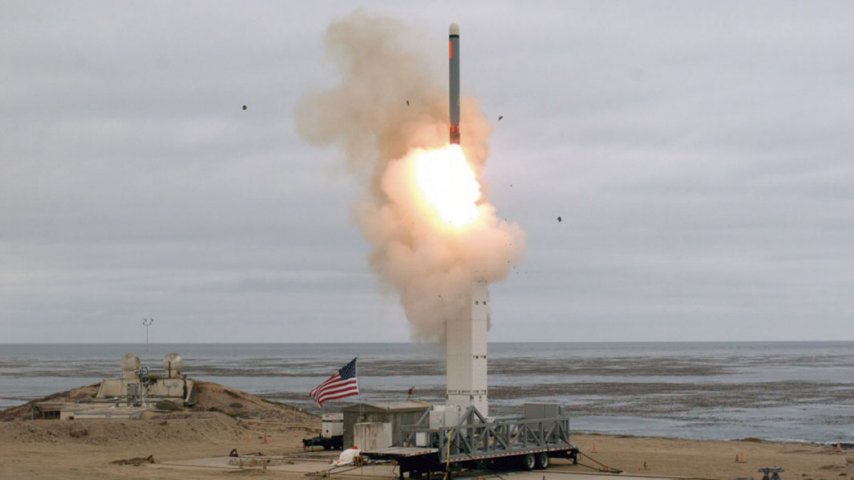
No longer bound by the 1987 Intermediate-Range Nuclear Forces (INF) Treaty, Washington announced that it is officially flight-testing ground-based cruise missiles that can fly between 500 km and 5,500 km.
On San Nicolas Island, California, on 18 August, the Department of Defense (DoD) conducted a flight test a Tomahawk Land Attack Cruise Missile (LACM).
“The test missile exited its ground mobile launcher and accurately impacted its target after more than 500 km of flight,” the department said on 19 August. “Data collected and lessons learned from this test will inform the [DoD’s] development of future intermediate-range capabilities.”

On 18 August, the Pentagon launched a Tomahawk missile from a Mark 41 Vertical Launching System. (DoD)
A DoD spokesperson told Jane’s that the US Navy (USN), in partnership with the Strategic Capabilities Office, used a Mark 41 Vertical Launching System (Mk 41 VLS) to fire a “variant” of the Tomahawk LACM.
The flight test came just after Washington formally withdrew from the INF Treaty on 2 August citing that Moscow's 9M729 missiles, launchers, and associated equipment violated the treaty.
However, prior to the US withdrawal, Russia accused the US of also violating the treaty. Moscow charged that the US deployment of the Mk 41-based Aegis missile defence systems in Poland and Romania enabled the deployment of LACMs ashore, a development that would be banned under the treaty.
While the Aegis missile defence system uses an Mk 41 launcher, the DoD spokesperson said the “system tested” is not the same as the Aegis Ashore Missile Defense System currently operating in Romania and under construction for Poland.
“Aegis Ashore is purely defensive,” the spokesperson told Jane’s . “It is not capable of firing a Tomahawk missile.”
Looking to read the full article?
Gain unlimited access to Janes news and more...






